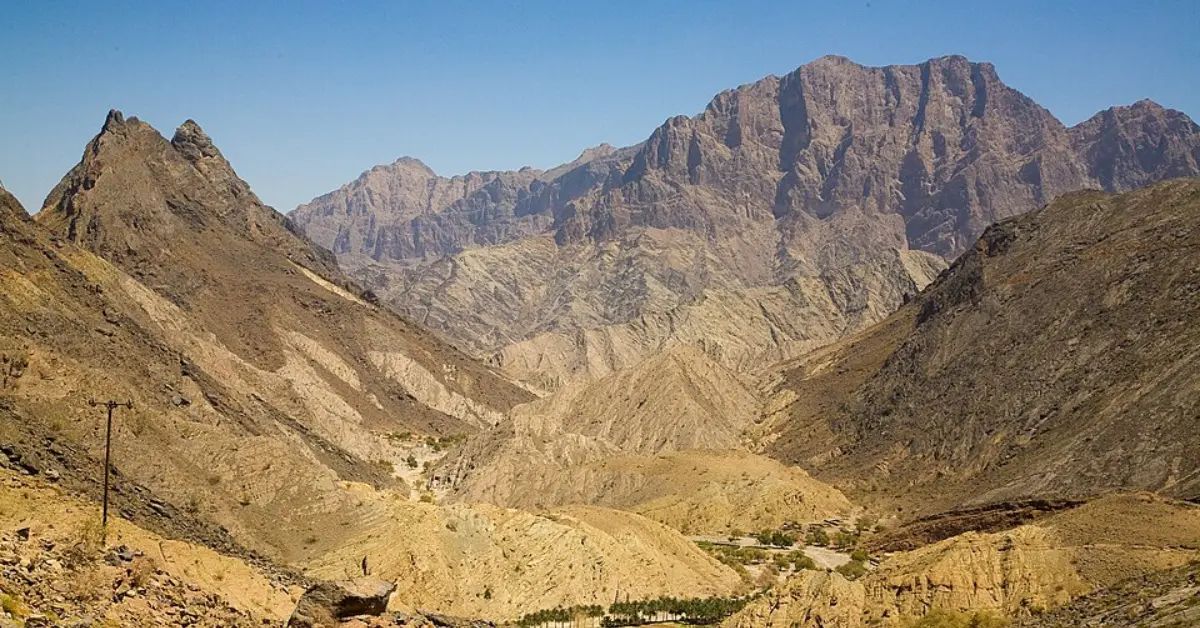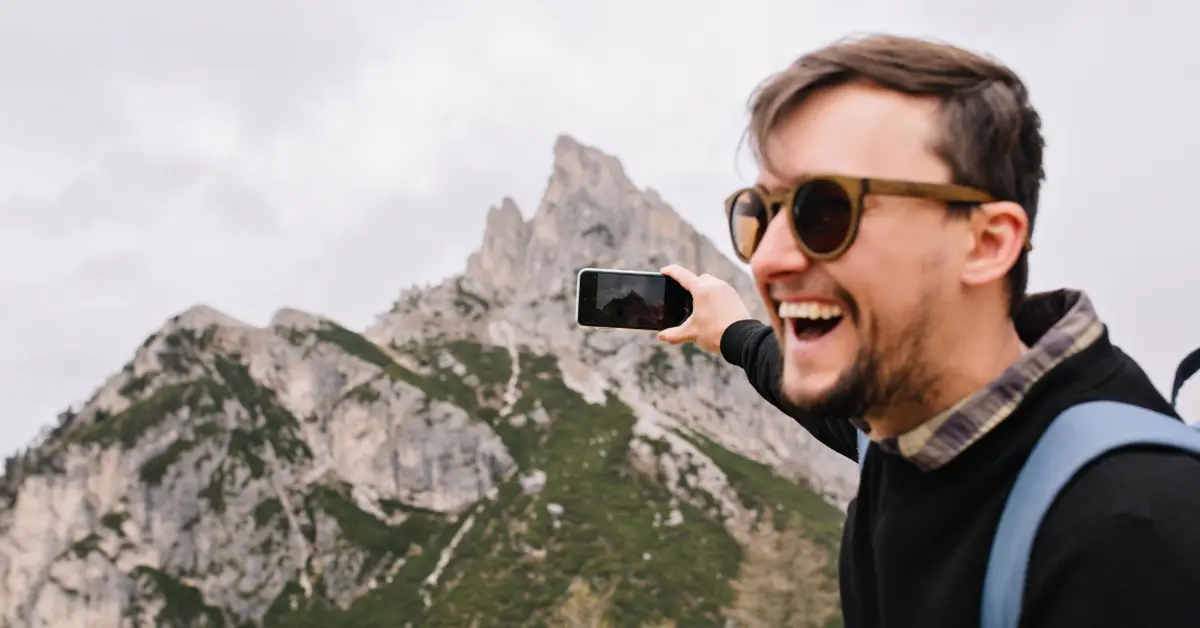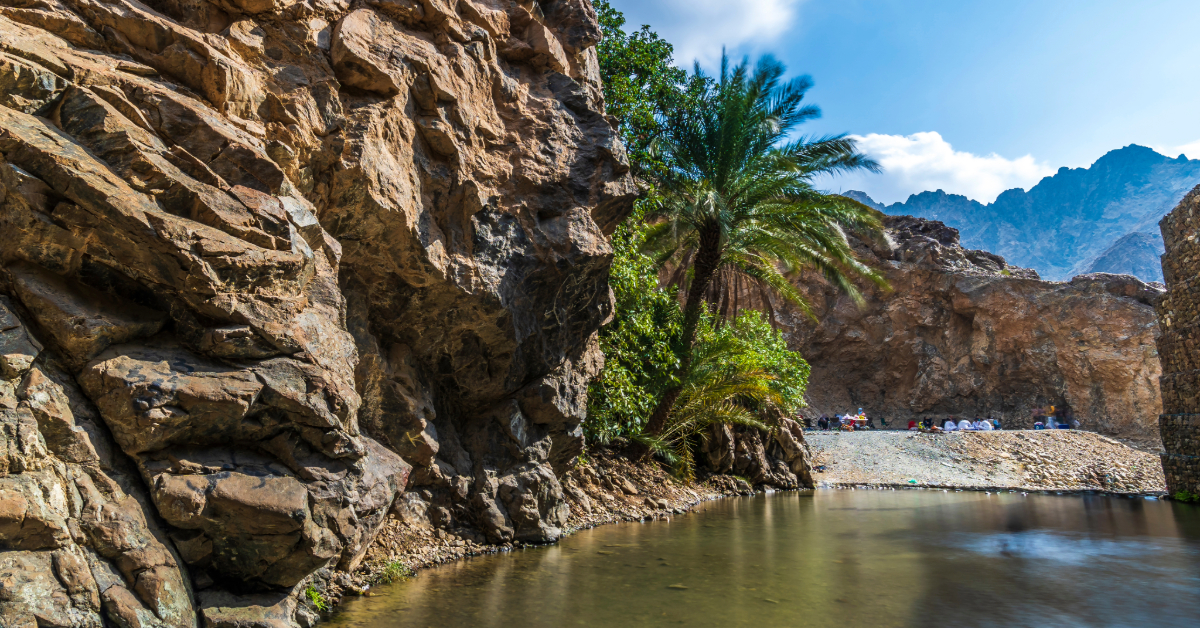Tucked away in the Hajar Mountains of the UAE, Wadi Al Sidr is a place full of peace, mystery, and natural beauty. It’s not just a dry valley. During the rainy season, it comes alive with flowing water and green patches. Even when dry, the rocky trails, Sidr trees, and dramatic mountain views make it a great spot to visit.
Whether you love hiking and photography or just want to spend a quiet day outdoors, Wadi Al Sidr is the place to be. In this guide, we’ll explore its natural features, cultural background, things to do, and tips to help you make the most of your trip.
- Natural features of Wadi Al Sidr
- Cultural and historical significance
- Things to do at Wadi Al Sidr
- Tips for your visit
- Camping at Wadi Al Sidr
- Flora and fauna
- Why Wadi Al Sidr is special
- Key takeaways
- FAQs
Natural features of Wadi Al Sidr
Wadi Al Sidr gets its name from the Sidr tree (Ziziphus Spina-Christi), a tough desert tree that’s been part of the local culture for centuries. You’ll spot these trees all over the valley. They are not only beautiful but also important for bees, which make the famous Sidr honey.
Here are a few things you’ll notice about the wadi’s natural setup:
- The valleys are steep and rocky, cut through ancient layers of rock. Some are sedimentary, some are metamorphic. It’s a dream for geology lovers.
- When it rains, temporary water channels fill up and may even form small pools.
- It flows through mountainous terrain, which gives it dramatic views.
- A dam was built in the early 2000s to control flash floods and help manage water flow in the area.
Cultural and historical significance

Knowing the cultural features of a place gives us a glimpse of its people, community, and lifestyle, which makes us remember it deeply. Wadis in the Hajar Mountains have long been lifelines where people live, work, and farm in the narrow window of moisture those valleys provide.
Terraced farming was common here in the past. Locals built small stone walls along the slopes to trap water and soil, creating flat spaces to plant crops. The land around Wadi Al Sidr was seen as fertile during the rainy seasons, and small communities made the most of it.
Tribes such as the Mazari have lived in this area and are historically connected to parts of the Hajar wadis.
Short history of Wadi Al Sidr
The wadi is named after the Sidr tree, which has cultural resonance in many parts of the Arabian Peninsula. Its leaves are used in traditional medicine, and its flowers produce nectar for Sidr honey, which is prized across the region.
If you look closely while exploring, you will notice narrow trails, abandoned farms, and the occasional stone structure.
Things to do at Wadi Al Sidr
Whether you’re looking for adventure or some quiet time, there is something for everyone in this valley. Here are a few ways to enjoy your visit:
Go off-roading in a 4×4
One of the best ways to explore Wadi Al Sidr is in a 4×4. The dirt tracks twist through rocky slopes and dry riverbeds, making the ride feel like an adventure movie. You’ll bounce around a bit, but the views of the mountains and even the sea in the distance are worth it.
You can book a 4×4 tour. The drivers know the safest routes, and the tours include plenty of spots for taking photos and stopping for short walks to the water pools.
Go hiking
If you love to explore the mountains on foot, go hiking at Wadi Al Sidr. You can explore the wadi bed, scramble over big boulders, and squeeze through narrow passages. The landscape changes with the season. It is dusty, quiet during dry months, and green after the monsoon.
Start your hiking journey early in the morning to beat the heat. Bring water, a hat, and snacks to stay hydrated and nourished while hiking. Hire a local guide because some paths are tricky and may get slippery after rain. It’s a wonderful place for hiking, but risky at some points, so climb carefully.
Snap some photos

Nature lovers and photographers will love this place. From rugged cliffs to the soft green patches around water pools, Wadi Al Sidr is full of surprises. Sidr trees pop up randomly, and the light during early morning or late afternoon is perfect for photos.
Bring a wide-angle lens to capture landscape views. And keep an eye out for birds, insects, and even reptiles soaking up the sun.
Tips for your visit
A trip to Wadi Al Sidr can be fun and peaceful as long as you go prepared! Here are some simple tips to help you stay safe and enjoy the experience:
- Go with a local tour operator or guide unless you have significant off-road and mountain experience. Local operators know the route and when to turn back.
- Check the weather for the mountain region. Even if it looks sunny where you are, rain in the mountains can cause sudden flash floods.
- Carry the basics: water, snacks, a first-aid kit, and a fully charged phone. You’ll be on your own in nature.
- Respect local land usage. Some parts may be private farmland or tribal land. Ask before wandering over cultivated areas. Always leave things as you found them.
- Wear sturdy boots for climbing and scrambling, a sun hat for day trips, and layers for chilly mountain mornings.
- Leave no trace. Don’t litter. Carry a bag for your trash and take it home with you.
Explore: Getting Around the Emirates: A Guide to Transportation in the UAE
Camping at Wadi Al Sidr
Follow these rules for camping at Wadi Al Sidr to avoid any inconvenience during your trip.
Short-term camping
You usually don’t need a permit if you plan to camp for just one or two nights. However, it is advisable to check local rules before setting up camp. Pick a safe and clean spot and ensure you’re not blocking any paths or private areas.
Long-term camping
For longer stays, you’ll need permission from local authorities. This often involves paying a small fee and ensuring your camp is made from temporary materials. That means your camp should be easy to take down and leave no trace behind.
Tips for camping
- Camp in the allowed area only. Camping outside these areas can result in fines.
- Obtain the required permissions to avoid fines or legal issues.
- Know the local camping rules to minimise environmental impact.
- Clean up your campsite thoroughly. Pack up all the trash and leave no trace.
- Pack everything you need for your trip, including water, food, and a first aid kit.
- Inform a family member or friend about your camping plans. This may be useful in case of an emergency. The star of the show is the Sidr tree (Ziziphus Spina-Christi). These trees are thorny and thrive even in the harsh desert conditions. They have thick leaves that provide shade and are an important source of nectar for bees. In fact, the famous Sidr honey comes from these trees. This honey is sweet, rare, and highly prized.
Flora and fauna
Wadi Al Sidr is home to some amazing plants and animals that have adapted to the tough mountain environment.
Flora
The star of the show is the Sidr tree (Ziziphus Spina-Christi). These trees are tough and thrive even in the harsh desert conditions. They have thick leaves that provide shade and are an important source of nectar for bees. In fact, the famous Sidr honey comes from these trees. This honey is sweet, rare, and highly prized.
The Sidr tree also produces small, cherry-like fruits that turn purplish-black when ripe. People have traditionally eaten them raw, used the leaves for their lovely scent, and even added them to baths. Besides Sidr trees, you’ll also spot desert-friendly plants like acacias and tamarisks, which offer shelter to wildlife and add to the valley’s greenery.
Fauna
While you won’t find many large animals here, the wadi is full of smaller creatures that have adapted to survive in this dry environment. Keep an eye out for lizards basking on warm rocks or darting quickly between bushes.
After the rains, seasonal pools form, creating temporary homes for toads and other amphibians. These pools are crucial for supporting a variety of small animals, helping to keep the wadi’s ecosystem alive and buzzing with life.
Why Wadi Al Sidr is special

The wadi combines wildness with accessibility, as it is not too far from populated areas, yet it preserves a raw character. The Sidr tree connects it ecologically and culturally to the land.
This wadi contrasts with more developed wadis. It has fewer built amenities and a more wilderness feel. The interplay of geology, hydrology, and human history makes it more than just a scenic spot. It’s a place where stories lie in stone.
Key takeaways
Wadi Al Sidr is a place full of natural beauty and adventure. Its rocky hiking trails and boulders make exploring exciting, and after the rains, the seasonal pools and green patches bring life to the wadi. This place is surrounded by Sidr trees everywhere.
The wadi also hosts birds, lizards, insects, and other wildlife, making it great for nature lovers. Camping is possible here, but be careful about flash floods and check the weather before setting up tents.
Even when dry, the wadi has charm, with dramatic rocks and scenic views of the mountains. It’s perfect for anyone who loves the outdoors, photography, and adventure.
FAQs
The ideal time to visit is when the pools fill and some greenery appears after the rains. Mornings or late afternoons are cooler and better for photos.
Yes, but avoid the wadi bed due to flash floods. Pick higher ground, check the weather, carry water, and inform someone about your plan.
Short walks on flatter surfaces are fine for beginners, but rocky or steep areas suit experienced hikers. To ensure your safety, wear sturdy shoes when visiting this place.
Wadi Al Sidr is home to small birds, insects, and reptiles. Sidr trees, green patches, and seasonal pools offer incredible sights.